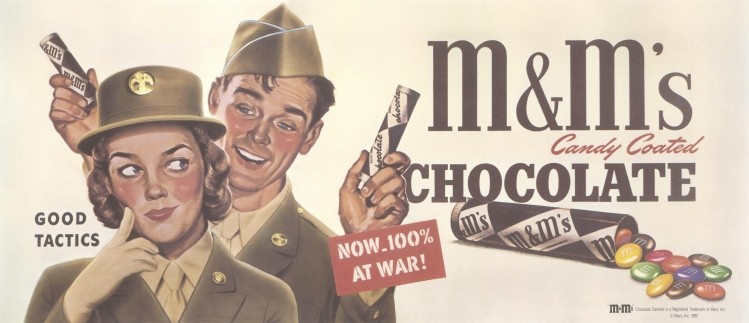Should brands avoid woke advertising at all costs?
Falling sales, marketing executives ‘on leave’. The backlash against Bud Light over its choice to partner with the transgender influencer Dylan Mulvaney continues to rumble on. And it follows hot on the heels of the backlash against Nike for using the very same influencer to promote their new range of women’s sports bras. Nike’s calls for everyone to be more inclusive have fallen on deaf ears, and this isn’t because everyone is transphobic, but rather, as one TikTok user put it “You chose a little boy with no breasts and some junk in his pants to represent real women.”
And therein lies the problem. These brands attempts to be woke have failed because they have forgotten the golden rules of marketing – always remember who your customer is and what your brand stands for. Yes, it’s fine to try and embrace inclusivity, but not if it’s at the expense of your core demographic. And yes, it’s great to show support for the latest ‘woke’ issues, but only if you are truly committed to the issue in question.
So, does this imply brands should avoid woke advertising at all costs? Not necessarily, but it is a fine line to tread.
What is woke advertising?
Woke advertising is when a brand jumps on board a current social, cultural, or political issue and uses it in their marketing normally with the aim of broadening their customer base and to appear ‘down with the kids!’. Get it right and it positions a brand as being socially aware and with a deep understanding of what is going on in the wider world. Nike’s 2018 Colin Kaepernick campaign, Believe in Something, despite some initial backlash, was a raging success and reportedly generated £4 billion in sales.
Get it wrong, and your company will come across as out of touch (ironically), inauthentic and only in it for the profit. Nike and Bud Light, we are looking at you.
Why do brands ‘go woke’?
It’s thought on average a person sees around 10,000 ads a day, which means just one thing – advertising clutter. And this proliferation of advertising across numerous different marketing channels means brands need to find new and innovative ways to be heard – enter woke advertising. By jumping onto the latest issue affecting society, it immediately lets a brand rise above the noise and stand out in an increasingly crowded market. And it can be really effective as this social experiment from Heineken demonstrates. Incorporating environmental, gender and feminist issues, the ad explores openness and whether common ground can unite people in a powerful and heart-warming way.
Research also shows consumers, especially the younger generation, prefer to buy from socially responsible companies with 70% of consumers wanting to know how brands address social and environmental issues. So, it makes sense for brands to invest in issues they know will help create a positive brand image and improve customer loyalty. This ad from Pot Noodle uses humour to break gender stereotypes and embrace gender fluidity, while perfectly staying on brand.
Is there a risk to ‘going woke’?
‘Get Woke, Go Broke’. This quote from bestselling author John Ringo has become a bit of a rallying cry over the last few years as more and more brands dabble with woke advertising and then crash and burn spectacularly.
Brewdog’s attempt to take on sexism is a prime example. Their intentions were admirable aiming to “… close the gender pay gap in the UK and around the world and to expose sexist marketing to women, particularly within the beer industry”. Even better they agreed to pay 20% of proceeds over the four weeks of the campaign to charities fighting inequality and supporting women. So far so good, until they redesigned their Punk IPA to have a pink label, renamed it Pink IPA and added the catchy slogan ‘Beer for Girls’. Funnily enough, their attempts to say they were just trying to satirise sexism didn’t go down too well.
And then there is Starbucks, who back in 2015 encouraged baristas to write ‘Race Together’ on their cups with the idea of sparking a national debate with its customers on racial oppression. Sadly, they forgot to consider how it would look being fronted by their founder, a white billionaire!
The mistake these brands made is even if their intentions were good, they appear to have tried to cash in on a social issue rather than being completely committed to the cause.
Nobody who saw the recent Nike campaign cares how Dylan Mulvaney defines themselves. What they care about is Nike choosing someone who doesn’t need a sports bra to model and advertise it. It was made worse by Dylan then parodying how a woman actually works out which was both unnecessary and offensive. Sadly, this just points to Nike being woke for the sake of being woke, rather than being truly committed to equality and diversity. And when Caitlyn Jenner says ‘This is an outrage’, you know you’ve got it horribly wrong.
Should brands ever ‘go woke’?
Woke advertising isn’t a new concept. In fact, back in the 1940s, many brands, including M&M’s openly supported the war effort,

while the 1970s bought us possibly the wokeist ad in existence – yes that Coca-Cola ad! So, the reality is woke advertising is here to stay, so it’s definitely a marketing tactic brands should have on their radar.
However, we would argue to create successful woke advertising, the first step is to stop seeing it as being woke, but rather as supporting something your brand passionately believes in. So, if there is a cause, whether that’s social, cultural, or political which is in line with your overall brand purpose and values, then by all means go for it. If you adopt this approach, then anything you do will stay authentic to your brand’s overall messaging, keep your consumers and employees happy and you won’t be accused of ‘woke washing’. Patagonia is the classic example of getting it right, while Pepsi’s frankly dreadful Kendall Jenner ad is a classic example of getting it wrong.
This approach will also ensure any marketing activity will keep your core demographic more or less happy (they’ll always be some dissenters!) and will help you focus on long-term engagement, rather than a quick win which could be accused of being exploitative, such as the M&S LGBT Rainbow Sandwich.
But also accept the fact, sometimes it is fine to do nothing, especially if it means you won’t be staying genuine to your core brand values and purpose. Just because everyone else is supporting the latest social, cultural, or political issue doesn’t mean you need to. And sometimes it’s good to remember that sometimes a beer is nothing more than just a beer.
